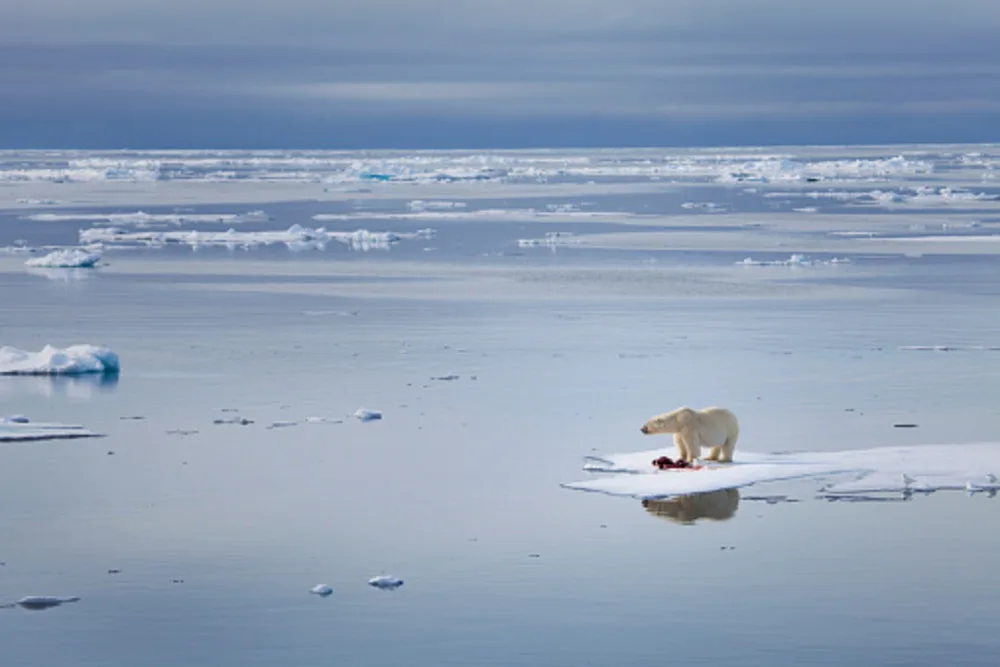
Thawing permafrost in the Arctic is becoming a source of carbon emissions
Over 1,000 measurements of ground carbon dioxide emissions were taken at each of the 100 sites across the Arctic.
The Arctic is warming faster than any other region on Earth with surface temperatures increasing at a rate that more than doubles the rest of the planet. The permafrost and ice sheets in the Arctic are critical stabilizers for the environment and the carbon cycle, however, the warming climate is causing an alarming amount of carbon to be released from northern permafrost regions.
Such significant amounts of carbon are being released from northern permafrost regions during the winter months that it is exceeding the amount of carbon that can be captured by regional plants during the summer. This means that the large swath of Arctic tundra circling the globe is now a source of greenhouse gas emissions that are adding to the current climate crisis.
The details of this process have been analyzed in a recent study led by Susan Natali from Woods Hole Research Center in Massachusetts and co-signed by a group of another 74 scientists from 12 countries around the world. According to their findings, there is a net loss of carbon in northern regions during recent years, which means that more carbon is escaping the surface than the amount that is being taken in.

An image of thawing permafrost. Credit: Arctic National Park
The amount of carbon dioxide released into the atmosphere from permafrost across these high northern latitudes during the winter has not been adequately accounted for until now. In situ observations of carbon dioxide emissions from Arctic and boreal soils have helped the research team better quantify and understand current and future winter carbon losses across the region.
More than 1,000 measurements of ground carbon dioxide emissions were taken at each of the 100 sites used around the circumpolar Arctic between the months of October and April. The data obtained showed that the yearly loss of carbon from the permafrost region was roughly 1.7 million metric tons, which is a value larger than the average growing season carbon uptake, which is estimated to be close to 1 million metric tons.

Map of permafrost cover in the Arctic. Credit: USGS
In the past, scientists hypothesized that very few microbial processes occurred during the cold winter months and essentially no respiration, a process in plants where energy is created and carbon dioxide is produced, would occur.
The obtained measurements in this study indicate that this is no longer the case. As the Arctic warms, soils across the region are contributing an extra 0.7 million metric tons of carbon dioxide annually. This is mainly the result of the imbalances between what is released from the thawing soil, and what gets absorbed by the different biomes.
The future could be very different with increasingly greater releases of subsurface greenhouse gases, like carbon dioxide, into our atmosphere. If carbon emissions continue on the pace they are on now, northern soils could release 41 per cent more carbon than present-day by the year 2100.
Even in a scenario where the world implements extensive greenhouse gas regulations and stops burning fossil fuels, the amount of carbon put into the atmosphere from Arctic and boreal soils could go up by 17 per cent. The study does not account for methane emissions, another common gas released from thawing northern soils, which is about 30 times more powerful than carbon dioxide when it comes to enhancing Earth’s greenhouse effect.
With files from Isabella O'Malley.
Source: Nature - Climate Change
WATCH BELOW: 'MASSIVE' MERCURY RESERVES HIDDEN IN ARCTIC PERMAFROST MAY BE A PROBLEM IN FUTURE
Thumbnail credit: Willian Justen de Vasconcellos (via Unsplash)

